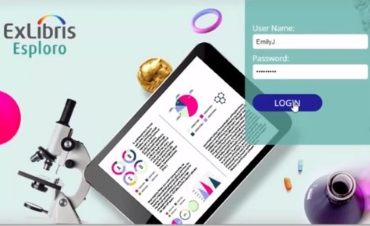The University of Surrey’s experience shows the challenges that are common among research institutions as they try to capture, manage, and promote faculty research.
A public research university in England, the University of Surrey has had an institutional repository showcasing faculty research papers for more than a decade, says Fiona Greig, Head of E-Strategy and Resources for the university’s library. But when the UK came out with a new rule requiring universities to make the data from research projects publicly available, Greig and her colleagues realized this system would not be sufficient to meet their needs.

It’s too big a risk for institutions like ours not to comply with open-access requirements.![]()
Publicly Accessible Research
“Any data set produced with government funding must be made publicly available when a research article is published — and the data have to be reusable and accessible for at least ten years,” Greig explains. But the repository that Surrey was using was not designed to store data sets as well as journal articles. This forced the university to use a separate repository for its research data.
Managing the original repository already took a great deal of time and resources. Adding a second one extended this burden even further.
Ease of Use
Because academics were often confused about how to deposit their research and add the proper metadata, the library had made this a fully mediated service for faculty. This was only possible by having the University agree to add two new posts, doubling the specialist administrative staff. “I have three team members whose job is to upload open-access materials, and a senior admin post to oversee the operation within compliance guidelines and our SLAs,” Greig says.
Linking Relevant Data
Having a separate repository for research data adds to this work, and the systems’ shortcomings create further challenges. For instance, it is not possible to automatically link data sets with the journal articles they support. “Our existing repositories are just flat boxes with metadata,” Greig observes. “They take everything as non-relational documents.”
Impact Analysis
In addition, these repositories do not have advanced metrics for measuring the impact of the university’s research. With all of the time spent uploading and maintaining research assets, librarians can’t focus on more value added tasks. As a result, “we are not measuring our output very well in terms of their impact outside traditional citations or Altmetric mentions,” she says.
A New Approach
Faced with all of these challenges, Greig and her colleagues were looking for a new approach to managing research assets.
“We need to be smarter about the technologies we use,” she says. “It’s too big a risk for institutions like ours not to comply with open-access requirements. The current workload needed to ensure compliance is not sustainable, and we need something that is easier and more efficient moving forward.”
The University of Surrey is an early adopter of the Ex Libris Esploro research services solution.
To learn more about how the current challenges libraries face in managing research output and data, download the free white paper “The Need for a Next-Generation Research Repository”.
January 7, 2019






